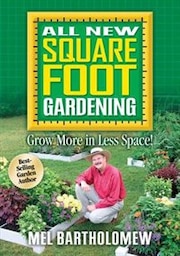 |
| Oh Canada! Great use for Kalachoe's eh? :-P | | | |
|
|
|
|
|
|
|
Canada Blooms this year was a joint venture with the National Home Show. It's been a few years since I attended Canada Blooms, as I have felt many of the garden trends and designs are unrealistic to maintain, and the average home owner can't afford such extravagance. It used to bother me to see spring/summer forced material blooming all at once and to see plant material suffer. But I can see how it drives the garden economy and gives people a joy to see spring colours in full show. So, I decided to give it a go.
The Canada Blooms portion of the show was a lot smaller and more concentrated. Overall it was a great show, a little less showy than years past and the market place was smaller than I remember. However, the National Home Show section was a nice draw once we were done with the Blooms portion.
Like a bone-head, I forgot to check my camera to see if I remembered the memory card. Forgive my photos, as they are from my camera phone. Sorry.
Here are some of the highlights I chose:

I'm quite partial to interesting floral designs. Aren't these sweet?
Orchids, sphagnum moss, Kermit Mums, Aspidistra leaves.
 |
| Peace on Earth |
I thought this one was quite clever. Called "Peace on Earth". This photo does not capture it at all. The wood use is all drift wood, weathered by water. It must of taken hours to put together and years to collect. I really think it was done well.
The next photos are of the
Green Zone section. I enjoyed this most. Living walls, roof top gardening, and interesting containers used to grow veggies.
This is the roof top garden display.. I really like the concept, but how realistic it is to maintain it in this patterning is uncertain. It certainly points to a great trend and environmental focus.
Living salad bar. So cool. This was a part of the Food Share section. Lettuce and sprouts were in growing mediums, with grow lights above. Harvest as you make dinner.
Sorry, I tried a close up. Sprouts growing in these cool clay pellet medium.
Humber College's Landscape Design display featured a more earthy, Urban Homestead theme. Loved it. This living wall, herb and veggie boxes, are quite fun. Tilted to reach appropriate sun levels. I really thought it was a great method to screen in privacy and provide yummy nibbles. Their sustainable features are an example to where gardening trends need to go. I am glad to see my former alumni heading this direction.
 |
| Plant World's Display |
I feel bad as my camera cut off the other container, but a colleague of mine put these together, and I think they may have not been the showiest, but they certainly have unique elements that could realistically be situated in your own backyard. Well done Edward!
It was a fun evening. Parking is free after 5pm, which I took advantage of. Cheers to the Bloom display designers and organizers.
 I had my hair trimmed, and I collected the trimmings. I have thick hair and the hairdresser always remarks that I leave a small animal behind ;)
I had my hair trimmed, and I collected the trimmings. I have thick hair and the hairdresser always remarks that I leave a small animal behind ;)






































